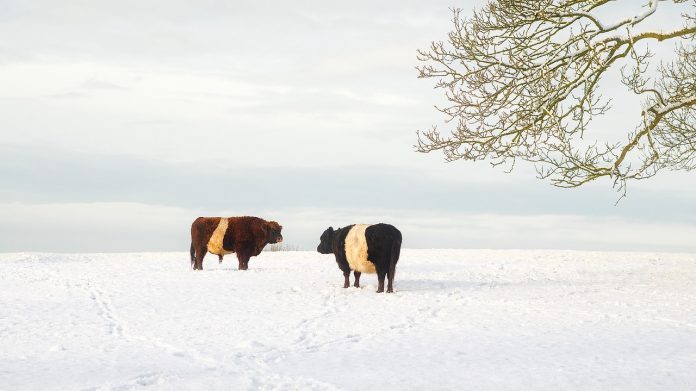Wintertime is here, for good or for bad, and managing pasture with livestock can be tricky in the winter. You have some factors to consider during the winter, such as grazing management, forage quality, supplemental feeding and planning for the future.
Let’s take a look at these key aspects to see if any can improve your pastures during the winter.
Grazing management
Depending on your grazing strategy, stocking density and how your forages produced this year will factor into where you are at right now. If you implement rotational grazing on your farm, you may still be grazing your livestock or just starting to feed hay. But when the ground gets wet and muddy due to snow, rain and freezing and thawing, do you have a plan for your livestock to keep your pastures from being destroyed and keep your livestock’s daily intake of feed where it needs to be, so they do not lose condition?
Do you have a heavy-use pad that you can put livestock on when the conditions are bad? Can you reduce your stocking density, by using multiple pastures? Do you have your feed, water and mineral sources spread out, so your animals will move around and not bunch up in one spot, tearing it up?
Another option, which is more of a last resort, is a sacrifice lot. This area should be an area that is relatively easy to feed livestock, with little to no slope to minimize erosion and an area that can easily be restored if heavy damage has occurred.
Forage quality
Have you considered testing your stored forages or the stored forages that you may buy? Why would I do that you may ask? The reason is, are you going to be able to meet the needs that your livestock require during the winter?
Keep in mind if your livestock are pregnant, they require more towards the end of that pregnancy and when their baby is young and nursing. If you do a forage analysis, important numbers to look for are total digestible nutrients, crude protein and neutral detergent fiber.
A hay sample with a TDN value of less than 60, will not provide sufficient energy to a 1,200-pound beef cow. Crude protein can have a great range depending on forage type and cutting. The value for NDF is an indicator of forage digestibility, the lower the number the better. Grass with an NDF above 60% is often mature grass with lower digestibility. Visual appraisal and smell are good indicators to evaluate spoilage and weathering more so than forage quality.
Supplemental feeding
Supplemental feeding sometimes is required during the winter. This is usually either due to running low on stored forages or the quality of your feed is not high enough for your livestock needs.
If you are running low on hay, you could supplement with corn. Corn has around twice the energy of hay. For example, if a cow needs 20 pounds of hay a day, you can feed 5 pounds of corn and 10 pounds of hay. They still need some hay to keep the rumen functioning and they may act hungry as you feed more corn and less hay. This can allow you to stretch hay supplies and/or improve overall feed quality.
You may also have some alternative options like corn stocks or hayfields. Feeding livestock corn stocks and grazing hayfields may be a little harder because most corn fields and hayfields may not be fenced but temporary fence can be installed rather quickly.
Corn stocks are a nice option for feed because you have all that material that is out in the field just lying there. For hayfields, if the weather is in your favor, it could be a nice option as well because most hayfields will probably have had some sort of growth to them after your last cutting but be aware of “pugging” the ground from hoof action. These two options are nice if you have the resources to do especially if you have to start feeding hay earlier than expected.
Planning for future
Managing your pastures during the winter can be more than what it seems. Winter is the perfect time to reflect on this past year and ask yourself some questions. Did my pastures produce the way I wanted them to? Did the quality meet the needs of my livestock? Did my hayfields produce like I wanted them to/needed? What new strategies can I use to improve my pastures? Do I need to reseed any pastures or hayfields? Were there some factors that were out of my control this year that caused problems?
These are just a few examples of what you should be asking yourself at the end of the year when you review the past year. Doing this can get you ready for the next year and ahead of the upcoming year. If you answered no to a lot of the questions above, you are the one who can make the change to improve.













